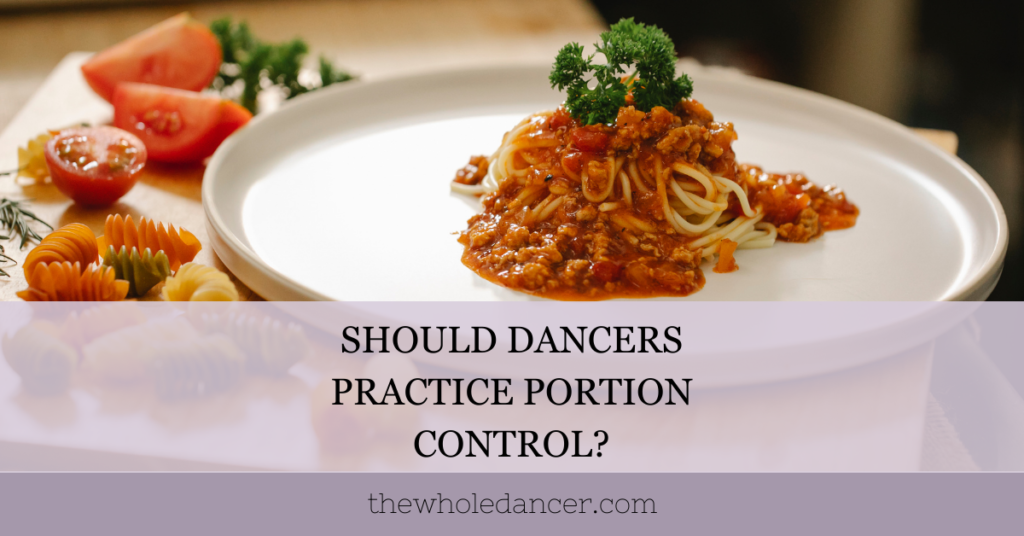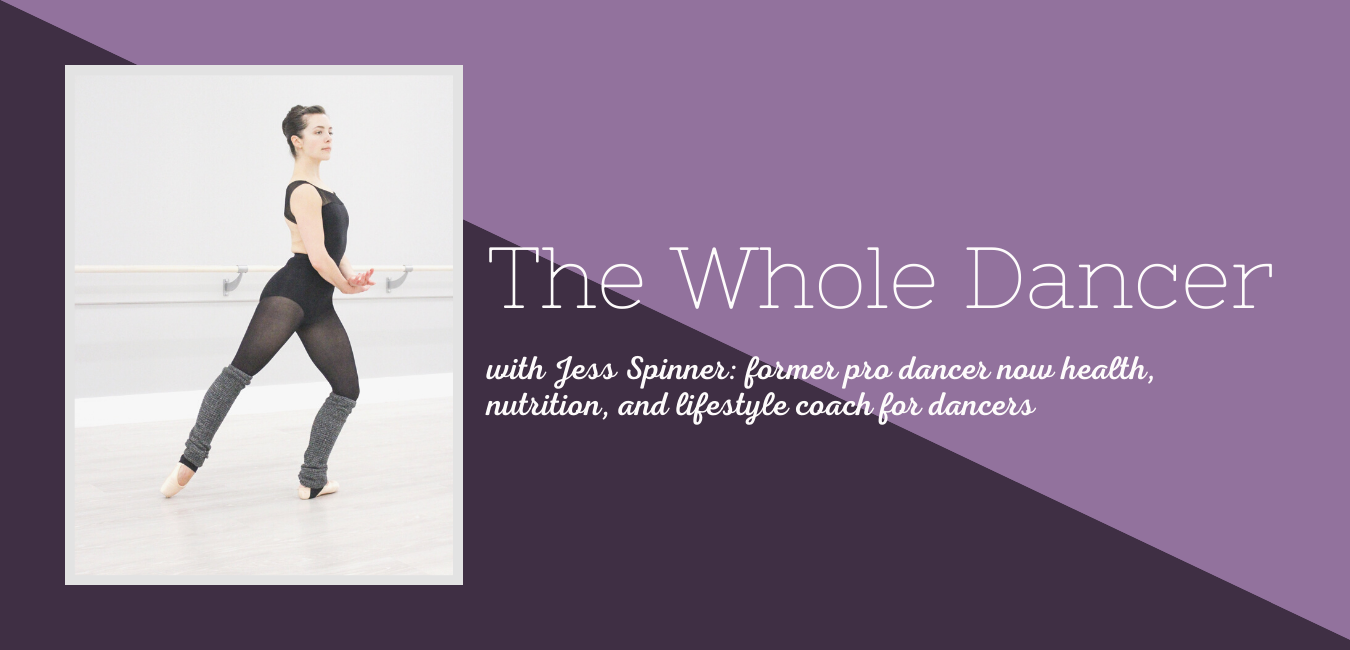In the majority of cases, the answer is no, absolutely not. And yet, it’s an idea that’s perpetuated in dance culture, the nutrition world, diet culture, and beyond. Its connection to the word “control” is reason enough to take caution.
Control is a key component of disordered eating. It’s something most dancers would benefit from working to release rather than incorporate it in ways that have been deemed acceptable by society.

The trouble with portion control…
Portion control basically tells you that you should be relying on a package to tell you how much you need. Companies even sell color-coded, portion-specific containers to help people follow a portion-controlled diet.
What this does is remove the empowerment that is possible for you with food. You can learn to truly listen to your body, and that means following internal cues and being proactive. Relying on a package or company to tell you what you need takes away your power with food.
Dancers thrive off discipline and control. This can obviously be very advantageous as you work towards your dance goals. When you apply those same tendencies towards food, the outcome can be dangerous. Even dancers without diagnosed eating disorders are often partaking in disordered eating to a degree.
Instead of portion control, aim for food confidence and empowerment.
Your food portions should be plentiful in order to support your best dancing and to meet your nutrient and energy requirements. If you focus on nutrient-dense foods like dark leafy greens, fruits, and colorful vegetables, you’ll make space to eat and enjoy more food. When you aim to incorporate a variety of different foods and adopt the mentality that all foods can fit into your eating plan, you’ll start to feel a much more easygoing food relationship unfold.
There are suggested portions even for vegetables, which is pretty clear evidence that portion guidelines are worth ignoring. In fact, I typically encourage clients to fill half their plates with vegetables to increase satisfaction, energy, and nutrient density.
If you become overly consumed with the “right” portions, you ignore something more important.
There will be days when a single serving of nuts or nut butter isn’t enough. Even though those foods have high caloric density, they’re packed with nutrition, so eating more than one portion if you’re still hungry is also OK.
As you ease into truly tuning into and trusting your body, you might benefit from considering portions only for those highly processed snack foods you enjoy as a treat. These foods are produced to have exactly the ratios of sugar, salt, and fat that make it hard to stop eating them — meaning it can be very hard to listen to your body.
Sometimes portion considerations can be used to help you fuel adequately.
When participating in intense dance classes or rehearsals, the impact on hunger might not be what you expect. While you’re dancing, your ghrelin levels (hunger hormone) may be lowered while peptide YY (hormone that reduces appetite) increases. This can result in not feeling hungry while you dance and even for a period of time after you’re done dancing.
The theory behind this is that your body’s circulating blood to prevent overheating. If you were to eat, the blood would go to your stomach to aid in digestion rather than stabilizing body temperature. Your body protectively decreases your appetite to prevent that blood from going to your stomach.
This means you may have to proactively eat before or following your most rigorous dance classes and rehearsals. Commit to having three meals a day and at least one or two snacks. If one of your meals is smaller to accommodate your busy dance schedule, you may need to include three snacks or more.
For more food confidence without obsessing over portion sizes, commit to this…
Put your food on a plate, sit down to enjoy each bite, and listen to the messages your body is sending you. This is actually part of The Whole Dancer 7-Step Process to reaching your body goals healthfully and sustainably.
If you struggle with this, you’re not alone! The good news is that every meal is another opportunity to listen to your body. Eating slowly and paying attention can work wonders.
Your eating plan and relationship to food are likely to be a work in progress. Being OK with that is going to help you trust the process.
Are you ready to explore your food relationship on a deeper level? Sign up for a free complimentary coaching call. The goal of this call is to help you gain clarity on your goals for your body, food, and dance. We’ll work together to identify a clear path to achieving those goals.
Are you feeling distracted by your body in class?
Are you wasting time and energy obsessing over or analyzing what to eat?
Do you want to experience support from a multi-certified coach who has been through exactly what you’re experiencing?
At the end of the call, if you’re a good fit for Elite Best Body Coaching or The Dancers’ Best Body Program, I’ll share the details of how you can get started. There’s no obligation to enroll in any paid programs after your free coaching call.
